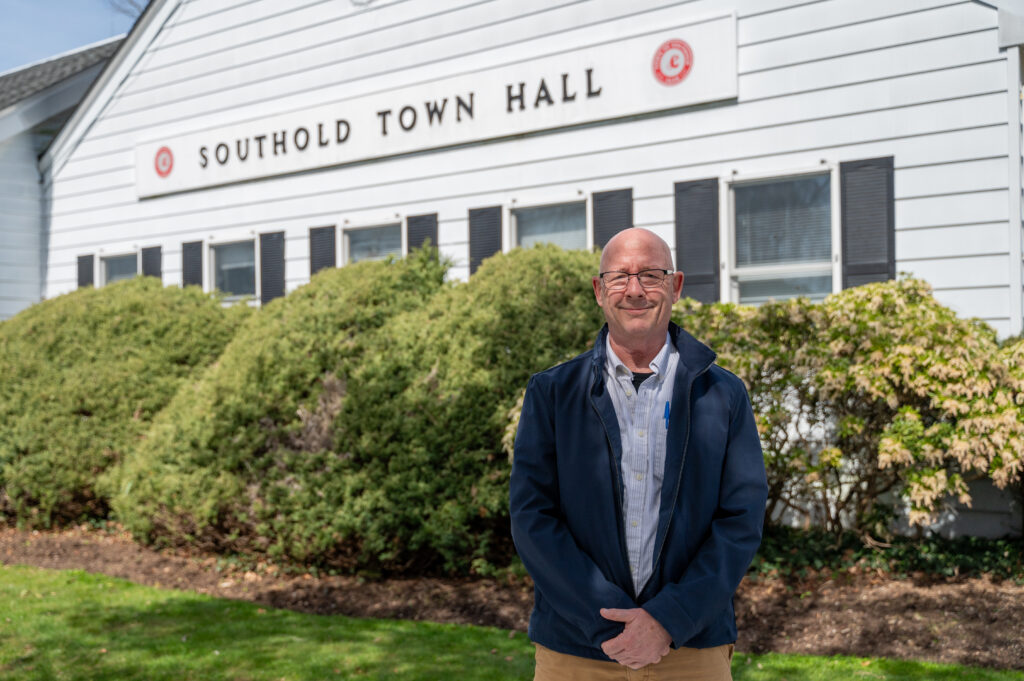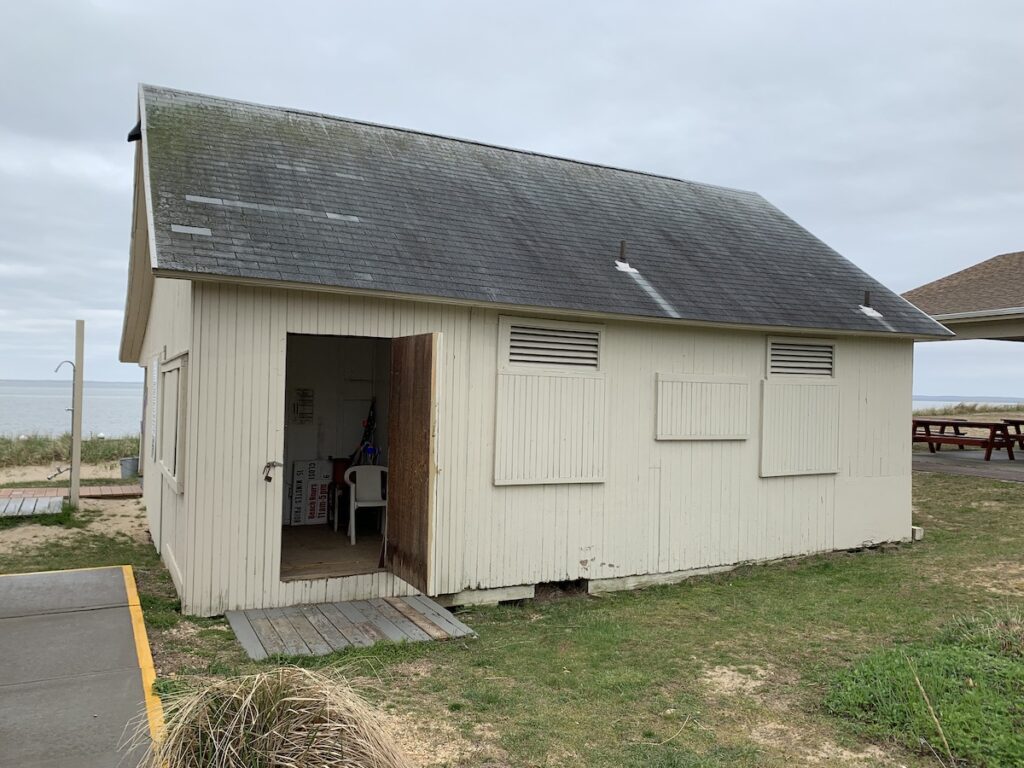Will a library expansion uncover Revolutionary War artifacts?

Could a renovation of a parking lot at the Mattituck-Laurel Library unearth Revolutionary War-era artifacts?
Some in the town’s planning department seem to think so, and are recommending an archaeological investigation into the property’s history as the project moves forward.
“These are rare opportunities when you get to investigate areas of historic significance in the town, especially where the British army was known to camp.”
Mark Terry
Plans filed with the town call for increasing the library’s parking lot by 24 spaces and also include an outdoor community greenspace.
“There are no New York State indicators that the parcel contains archeo-sensitive areas or structures; however, local historical knowledge identifies the parcel as a potential location where the British Army camped during the American Revolutionary War,” said town planner Brian Cummings, who prepared a staff report ahead of Monday’s Planning Board work session.
Assistant planning director Mark Terry said he felt it was important to call attention to the possible historical connection. “These are rare opportunities when you get to investigate areas of historic significance in the town, especially where the British army was known to camp,” Mr. Terry said, adding that the level of archaeological investigation would be left up to the Planning Board.
According to town historian Amy Folk, British forces settled into several encampments across the North Fork, but their main site was located on the west side of Marratooka Pond and spanned 200 acres to what is now Wickham Avenue.
A British-drawn map marks the encampment and also delineates what is today State Route 25, Ms. Folk said in an interview Tuesday.
A 1994 Suffolk Times article cites an orderly book discovered by a group of historic reenactors that documents the summer of 1778, when a group of loyalists camped in Setauket, Wading River and ultimately, Mattituck.
“Far from an elite corps of soldiers, the men who spent just over two weeks in the summer of 1778 were Irish and Scots immigrants from Maryland’s eastern shore who remained loyal to the Crown,” the article read.
While there were no battles fought on the North Fork, the men are thought to have come to forage for livestock, produce and other equipment to relay to British troops.
British troops occupied Southold from 1776 to 1780 and as the war went on, many Southold families fled to Connecticut, leaving their homes and properties behind.
“There were other encampments in every single one of the hamlets, but we don’t know where. We know they were living in some of the houses that were abandoned,” Ms. Folk said.
She said the Marratooka camp was a “very sizable” encampment that could have accommodated a thousand loyalists. Artifacts that could be recovered at the site include buttons, coins, buckles and bullets. “Whatever detritus an army would leave behind,” Ms. Folk said.
“[An investigation] would be great — because so much of that land is under the parking lot — to find out what is in there,” she said.
Planning Board members said they were in favor of suggesting the library investigate, but are wary about requiring it as part of site plan approval. “I would leave it up to the library to proceed in this,” said planning board member Jim Rich. “The library, it’s a nonprofit. They’re only there for the public good. Let’s leave it up to them to do the right thing.”
Library director Jeff Walden said Tuesday that he had an idea of where the encampment was, but didn’t think it was that close to their property. “I was totally taken by surprise,” Mr. Walden, a local history buff, said.
He said their next steps will include a discussion with the library’s board of trustees and project architect, who Mr. Walden said has already suggested finding someone local to perform a preliminary scan with a metal detector. “We’re not going to do a full dig, but we’re open,” to learning more.
To Mr. Walden’s knowledge, nothing of note was discovered when the ground was disturbed to make way for a library expansion in 2000. “If there was something back there, I’d be the first one who would want to find it and put it on display.”
A public hearing on the proposed expansion was held and closed earlier this year, drawing some comments from neighbors concerned about the extent of tree clearing and setbacks associated with the project.
In his report, Mr. Cummings noted that the lot expansion will improve the situation. Under town code, he said, libraries are seen as the equivalent of auditoriums and a building of the library’s size would require 140 stalls if built today. “They’re still well short of what’s required but this will help,” he said.
Library officials have said that the current parking lot is in poor condition and the parking is insufficient.
According to Mr. Walden, the outdoor space could be used for both children and adult programming and also serve as a Wi-Fi equipped outdoor workspace in the warmer months. The project would also expand the parking lot’s entryway to make it safer for vehicles entering and leaving the site.








